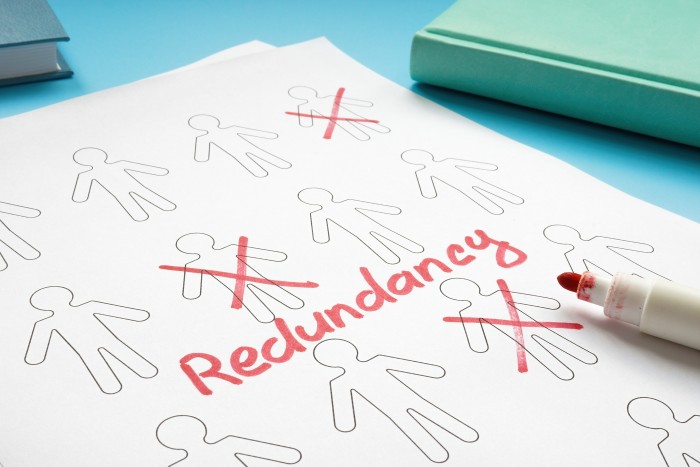Handling redundancies is one of the most difficult responsibilities for any employer. When faced with restructuring, downsizing, or closing parts of your business, it’s crucial to follow fair and legal procedures. One of the most important elements is applying fair and consistent redundancy selection criteria UK law recognises as reasonable. Get this wrong, and you could face costly tribunal claims for unfair dismissal. At EBS Law, we help employers across the UK manage redundancy processes properly — from planning to consultation to final decisions.
Understanding Redundancy Selection Criteria UK Law Requires
What Is a Redundancy Selection Process?
When redundancies are necessary, the employer must identify a fair method to decide which employees will be selected. This is known as the selection process. The redundancy selection criteria UK law expects are those that are objective, measurable, and applied consistently. You can’t just pick who stays and who goes based on personal preference — doing so could leave your business open to claims of unfair dismissal or discrimination.
When Do You Need Redundancy Selection Criteria UK?
Redundancy selection criteria apply when you’re reducing the number of employees doing a similar role. If only one person does the job, selection may not be needed — the role is redundant. But if there are multiple employees in the same or similar position, you’ll need a fair system to select who is at risk. For example, if you have five administrators and only need three, you must apply fair criteria to determine who stays.
Common Redundancy Selection Criteria in the UK
Employers are free to choose their own criteria, but they must be reasonable, justifiable, and non-discriminatory. Common and accepted redundancy selection criteria UK employers use include:
- Skills, qualifications, and experience relevant to the role
- Performance and productivity (based on appraisals or KPIs)
- Attendance records (excluding disability-related absences)
- Disciplinary records and conduct
- Length of service (but not as the sole criterion)
Each of these must be supported by factual evidence and applied consistently across the selection pool. The more objective the criteria, the better protected your business is from legal challenges.
What Criteria Should You Avoid?
Certain criteria can lead to discrimination or unfairness if used inappropriately. Avoid any criteria that could indirectly disadvantage employees based on protected characteristics such as age, sex, disability, or maternity. For example:
- Automatically selecting part-time or pregnant employees
- Using length of service as the only factor (age discrimination risk)
- Penalising employees for disability-related absences
Always assess your criteria through the lens of equality legislation and seek legal advice before implementing any system that could result in claims.
Scoring and Weighting the Criteria
Once you’ve chosen your redundancy selection criteria, you should assign scores and, if appropriate, weightings. For example, you might score employees from 1 to 5 in each category and give performance double weight compared to attendance. This helps create transparency and reduces the risk of subjective decisions. Ensure you record how scores were allocated and keep those records securely. If challenged, you’ll need to show the scoring process was fair and based on facts, not bias or assumptions.
Consulting with Employees for Redundancy Selection Criteria UK
Before applying the criteria, you must carry out a consultation with affected employees — either collectively (if more than 20 redundancies) or individually. During this process, you should:
- Explain why redundancies are needed
- Outline the proposed selection criteria
- Give employees a chance to comment or challenge their scores
- Consider alternatives to redundancy where possible
This isn’t a tick-box exercise — it’s a legal requirement. Employees must be genuinely consulted and listened to. Failing to do so can lead to successful claims, even if the redundancy itself is genuine.
Dealing with Appeals and Challenges
Employees who believe they were unfairly selected for redundancy should be offered the right to appeal. If an appeal is received, you’ll need to review their case fairly and possibly adjust your decision if errors are found. This step helps demonstrate your process was thorough and open to correction. At EBS Law, we support employers in managing appeals and preparing documentation in case of legal disputes.
If you would like free advice, John Bloor and the team are here to help. Call John today on 01625 874400 or email enquiries@ebslaw.co.uk for tailored support.
Alternatives to Redundancy
Before moving forward with redundancies, always consider alternatives that could avoid job losses. These include:
- Voluntary redundancy
- Reducing working hours or job-sharing
- Re-deployment to other roles
- Temporary lay-offs or short-time working
Demonstrating that you explored these options shows you acted responsibly and may help preserve morale across the team.
How EBS Law Can Help Employers
At EBS Law, we have over 20 years’ experience helping employers carry out legally sound redundancy processes. We draft bespoke redundancy selection criteria, support consultations, manage appeals, and protect businesses from legal claims. Our fixed-fee packages mean you can access expert advice without worrying about escalating legal costs. Whether you’re making one role redundant or fifty, we’ll guide you every step of the way with practical, reliable support.
Contact John Bloor today for expert support at EBS Law. We’re here to ensure your business stays protected every step of the way. Call 01625 874400 or email enquiries@ebslaw.co.uk.
Further Reading from EBS Law
For official government guidance, visit GOV.UK: https://www.gov.uk/staff-redundant/overview


